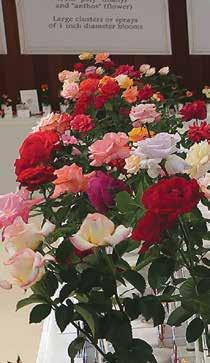Y
ou would think that pulling weeds is simple enough that anybody can figure it out. Surely it does not require a degree to master—just grab the weed and yank it out of the ground. Many people think that it is as easy as that. Though time after time, I see new volunteers, homeowners, and interns who struggle to stay on top of reoccurring weed problems. One thing I’ve noticed is that people obsess over getting every weed out, all at once. They start hand pulling at one end of the garden, and meticulously work through to the other side, until every weed, large, medium, or small, is gone. That’s fine if you can get it all done in one session, but that’s not how weeding always happens, especially in larger gardens. In most cases, noticeable weeds are the biggest ones that stand out like a sore thumb. It only takes a quick pass through the garden to pull those big, obvious weeds—the ones that are a foot tall or more. The ones that your neighbor can see. The ones that are getting ready to flower, or already are. These are the low-hanging fruit. These are the weeds that you can pull while fetching the paper, or taking the recycling to the curb. And what to do with those weeds after you knock off the dirt and have them in hand? Direct compost them, of course. No need to gather them in a pile or in a bucket and haul them away. Hide them under or behind another plant and let them rot out of sight, directly in the garden. Or wad them into a ball and heave them to the back of the garden where they disappear. Remember, you are only grabbing the biggest, most obvious weeds in sight, and be sure that they are not covered with ripe seeds! Weeds with seeds need to go to the compost pile or trash. The rest of the small to medium weeds can wait until the weekend. For the myriad tiny weeds that you encounter, you may not need to pull them by hand. Try a scuffle
Photo by Jen Sieradzki.
A Better Way to Weed
Scuffle hoe (l) and Dutch hoe (r) hoe or a Dutch hoe when soil is dry, to scrape and sever the tops from their roots. Those tiny weeds will shrivel up in 24 hours and virtually disappear so there may not be a need to remove them from the garden. Keep in mind that the reason there are so many tiny weeds is that the mulch was too thin or gone altogether. If you are using brown mulch, top dress these thin areas, making sure that mulch is 2 inches deep to prevent future weeds. When hand pulling larger weeds in conventionally mulched garden beds (leaf or hardwood mulch), it is easiest to yank most weeds when the soil is moist. Don’t forget to knock off the dirt, but be careful to return the clods of dirt back into the hole you just made and cover with mulch. Dirt clods sitting on top of mulch will sprout new weeds quickly. A rookie mistake. Take advantage of leaves that naturally fall from the trees. In fall, rake them off the lawn and evenly (and thinly) spread them on bare ground, between plants in flowerbeds. I love using the leaves of bald cypress and pine. Their color and texture are unbeaten. Pesky weeds like tall goldenrod, wild germander, and horse nettle are frustrating because they have suckering roots that spread far and wide. Pull them when the soil is moist, to remove as many roots as possible. You will likely miss
SCOTT WOODBURY Horticulturist 20
June 2022 | kcgmag.com
Turtlehead
Longleaf pine straw
Wild strawberry some roots and need to pull repeatedly through the spring and summer months to get them under control. Be sure to prevent them from going to seed, or they will spread out of control. Lastly, we have been tinkering with groundcovers—sometimes referred to as “living, green mulch”—that meander through flowerbeds, covering bare ground and supressingsuppressing weeds. In full sun to part shade, we use wild strawberry (Fragaria virginiana) between wild indigo (Baptisia spp.), rose mallow (Hibiscus lasiocarpus), and turtlehead (Chelone obliqua). When the strawberry fills in (it only takes one growing season), weeds have a hard time moving back in, and there is no
need for brown mulch. In shady areas, we are doing the same with round-leaved groundsel (Packera obovata). Eventually, the taller natives will shade out the wild strawberry and fill in, shading out weeds as well. Reoccurring weeds can be the bane of a gardener’s existence. But they don’t have to be. Here are the words to a favorite song of mine, Walking the Beans, by Greg Brown: “Bandana on my head, I got a long-handled hoe in my hand. You know people are afraid of hell and now I understand, ’cause I can picture some devil from that land below, and he’s a-pushin’ pigweed up from under every row I just hoed.” Happy gardening y’all.
Horticulturist Scott Woodbury is the Curator of the Whitmore Wildflower Garden at Shaw Nature Reserve in Gray Summit, Missouri, where he has worked with native plant propagation, design, and education for 30 years. He also is an advisor to the Missouri Prairie Foundation’s Grow Native! program. Find suppliers of native plants and seeds at www.grownative.org, Resource Guide.













